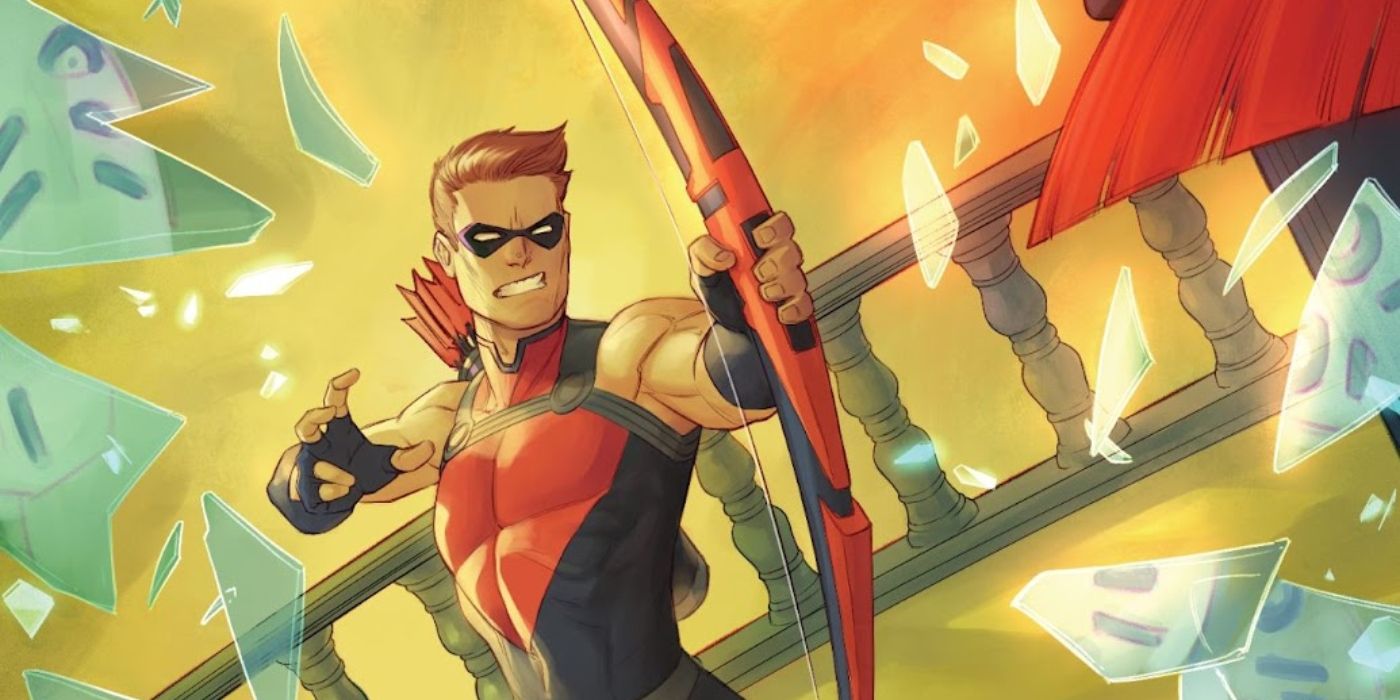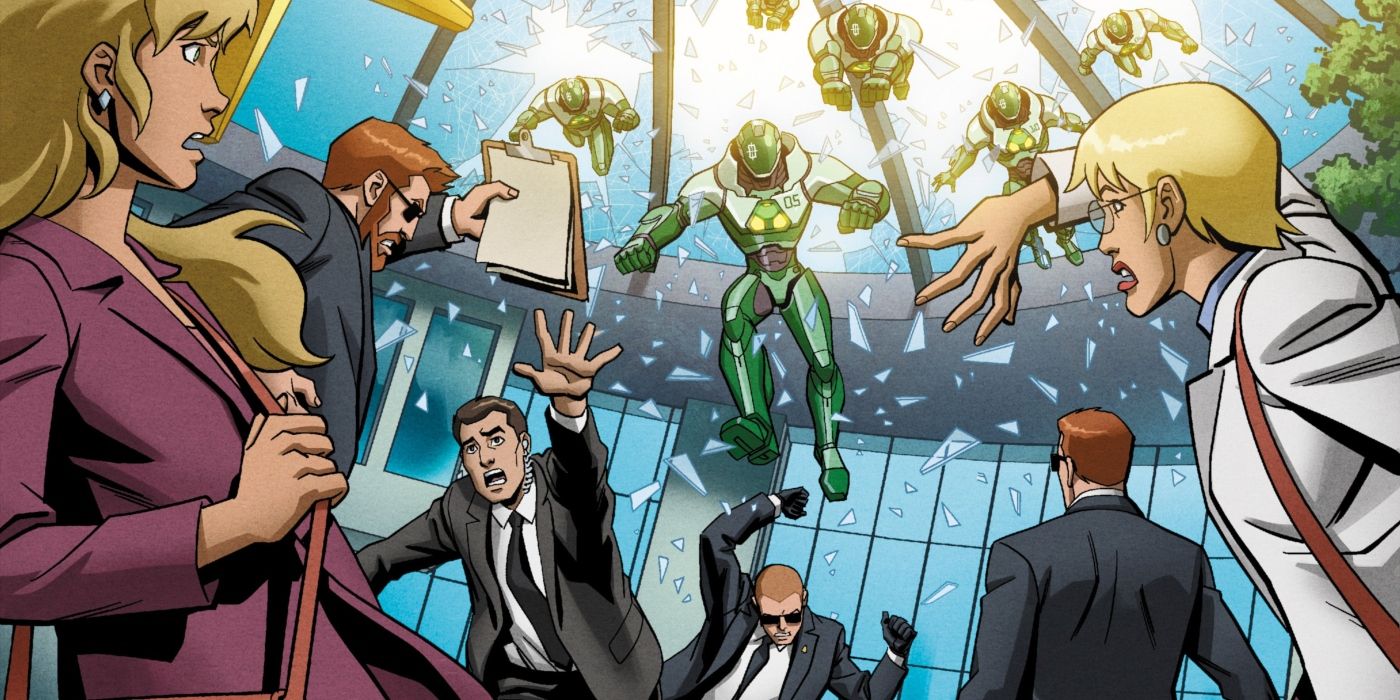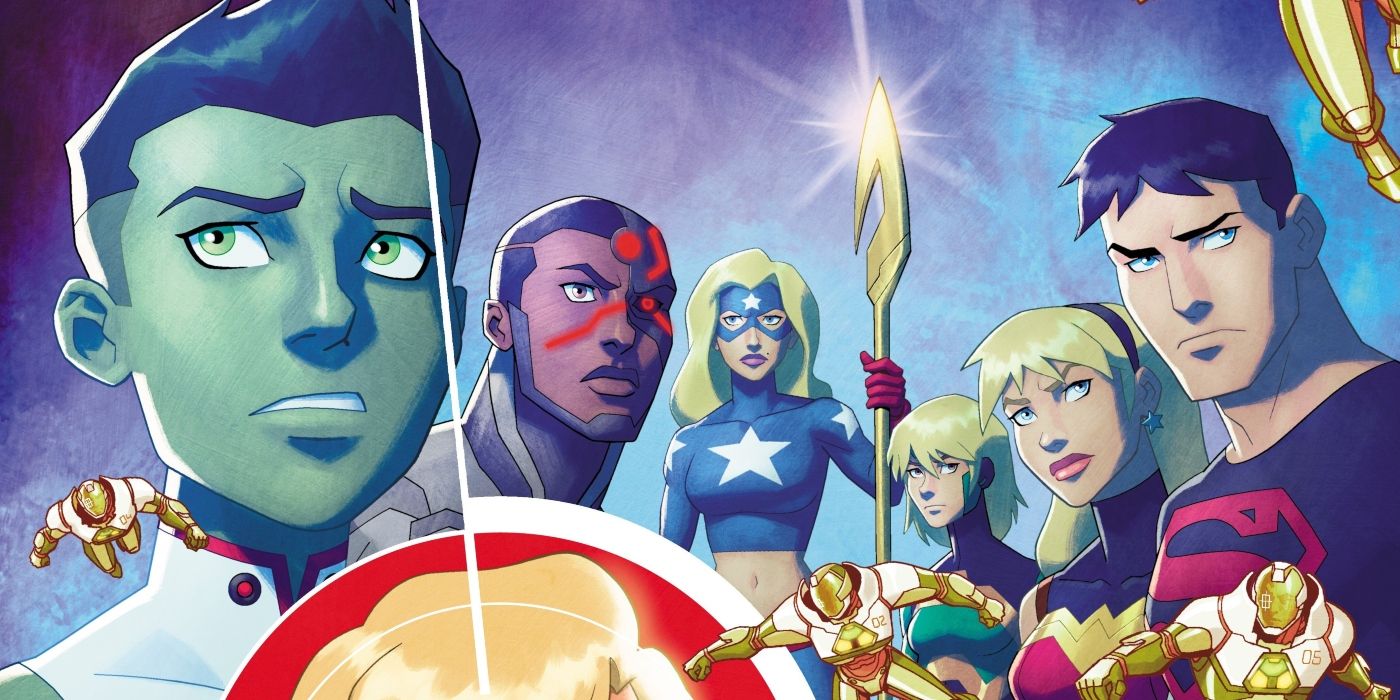Young Justice: Targets, a new six-issue mini-series by Young Justice: Phantoms showrunner Greg Weisman and storyboard artist Christopher Jones, follows the ending of the superhero show's fourth season. When Perdita finds herself captured by a mysterious force, a band of heroes from across the Young Justice Universe must come together to save the day. Subscribers to DC Universe Infinite will get access to the issue on June 14, while everyone else will be able to find the first issue of the series in comic shops on July 26.
During an excursive interview with CBR, Young Justice: Targets writer Greg Weisman and artist Christopher Jones revealed why it was so important for the story to focus on Perdita, the inherent differences between working in animation versus composing a comic, and the joys of seeing the Earth-16 incarnation of the DC Universe actually grow up.
CBR: One of the interesting elements of Young Justice: Targets is that Perdita is kind of at the center of the world at this point. Why was she the perfect character to place at the center of this story?
Greg Weisman: I think one interesting thing we've done with Perdita -- with some intention and with equal parts serendipity -- is that Perdita has these connections to so many of our leads and regulars and supporting characters. Some of them are obvious, and some of them are less so. But Kid Flash saved her life, she dated Beast Boy, Static, and El Dorado, and others helped rescue her last season in Taos -- she's the queen of Vlatava, which is on the border of Markovia, where Brion is king. So you got all these connections to this character. We just love Perdita. She's got tremendous appeal to us. She's just smart and funny and sharp and savvy.
And so, putting her at risk was a good way for this first set of new comic book issues, which we hope it'll be the first of many if all goes well. We wanted to give the readers a look at Earth-16 -- not just this character or that character. With one story, could we tell a story that would give us some depth but also some breadth across the cast? And Perdita seemed like a great character to pull in multiple other characters and have the story matter to multiple characters as opposed to, "Oh, they're heroes. Someone gets kidnaped, they're going to try to help no matter what." To make it more than just this anonymous person that I've never met is kidnapped. No, this is someone who matters to us... I don't think this is much of a spoiler, but the reaction to her abduction is immediate and intense from all sorts of characters in our large, large cast.
Perdita is unique to this version of the DC franchise, making her debut as part of the DC Showcase over a decade ago. What's it like to see this character evolve into such an important and unique figure in this version of the DC Universe?
Weisman: I created Perdita for the Green Arrow DC Showcase Short some years before Young Justice. And when we were doing the first season of Young Justice and wanted to do a story focused on Kid Flash, she seemed like a great character to bring out a lot of interesting things in Wally. And then as the seasons progressed into Season three, her dating Beast Boy, and into Season four and her political issues plus all the stuff with Beast Boy... It's great to see your characters grow, and it's one of the true joys about doing Young Justice. Most shows, particularly cartoon shows... I mean, how long has Bart Simpson been 10? And we're watching what, Season 33? On one level, it means Bart is eternally young and eternally fun, but on one level, sometimes the episodes that are the most interesting are those flash-forward or dream episodes where you see Bart as an adult. Because I do wonder what would Bart be like at age 43 instead of perpetually 10.
One of the joys, not just with Perdita but including her, is watching Dick Grayson go from age 13 to 24. Watching Kaldur'ahm go from 16 to 26 allows you to see the growth of a character, something akin to real-time, that you don't get if you keep characters perpetually at the same age... Dick Grayson is the perfect example. He was probably 9 when he started, then he was 13 for at least two decades. And then he became 18 or 19 for 10 years. Then he's been 22 for 20 years, and I get it, I totally get it. But at the same time, don't you lose a little something? It's great to see Billy Batson, at age 10, turned into Captain Marvel. And I guess it's less interesting if he's 24, turning into Captain Marvel. But is it interesting when he's 54 and turning into Captain Marvel instead of getting older, he's getting younger? I mean, these are questions that are unique to Young Justice because we move through time. And the world is kind of constantly expanding. That's the kind of stuff that jazzes us up.
Christopher Jones: I think one of the unique strengths of Young Justice isn't just the characters aging, although that's part of it. But it's the way their personal growth and evolution are interwoven with the good guys versus bad guy plots in the various emergencies that they respond to. Short of killing a character off, usually things in this type of fiction revert to a sort of status quo. But with Young Justice, you never know when something's going to happen and on one of their missions, something [is] going to permanently change who a character is or what the relationships are between characters. I think building a storyline around Perdita for the comic definitely brings those qualities into this comic series.
Chris, you've worked on this series in both comic form and as a storyboard artist on Young Justice: Phantoms. What would you say was the most surprising difference in approaching these characters from the perspective of animation versus comics art?
Jones: You are definitely exercising some different creative muscles. I mean, it is all visual storytelling. You're looking at the composition of the frame and watching the action, you want your communication to be clear. You're not just thinking about the aesthetics of what the image looks like. But you're thinking about what information are you presenting to the audience and how are they perceiving it.
Weisman: One thing you have to think [with comics] that you don't think of with TV is you've got to think left to right. With TV, we do not have to bother. If we want Green Arrow to jump around on a cartoon, we don't care what side he's jumping away from. But in the comic, if you want to understand, you've got to think left to right and top to bottom.
Jones: Yeah. Movement tends to be from left to right in comics because that's how we read. If you suddenly have movement change from right to left, that's very jarring visually, which you can use. You are thinking about how to divide this set geography of the page into the individual panels and allow for placement of the dialogue balloons that have to be read left to right. So if character A speaks first, and then character B, it helps if character A is to the left of character B -- any and all these considerations that are not there when you're planning for animation, you have different things that you can do in a comic that you can't animation. There's overlap in the Venn diagram, but it's definitely two different visual storytelling challenges. It's exciting getting to do both. Working in animation was a thrill. [It was] exciting and incredibly fun and rewarding to be part of the team on Young Justice: Phantoms.
But going from that to working on the comic is going from being a voice in the chorus to being a soloist. It's definitely a much purer form of creative expression. With the comic, the audience can actually perceive what my contribution was. No one's going to look at an episode of Young Justice: Phantoms and look at a shot and go, "Chris storyboarded that shot, you know." That's not going to happen. So this feels like a victory lap. I am very pleased with what I've been able to bring to the table with the line art and with what Jason Wright is doing with the color on the comic. We brought him in after he did all those promotional images that you have seen tied to the individual story arcs on the HBO Max app. Those were designed by Brandon Vietti, with final line art by myself and color by Jason. And we were so taken with how those turned out that we thought, "Boy, if we can bring some of that look to the comic book, that would be amazing." This feels like we've got a unique aesthetic that really delivers something that feels like an episode of a TV show.
This story has such a big, expansive scope thanks to Perdita's numerous connections to everyone. How did you determine which characters to focus on more heavily?
Weisman: I think the one thing we did want to do was actively give at least a moment to nearly everybody. But in terms of who got a particular focus, that went to who has these key relationships with Perdita -- some of which the audience knows about, like Beast Boy being the obvious one, and some of which we knew about -- but the audience didn't know yet. Will Harper is a good example of that. And the first issue reveals he's got this intense connection to Perdita that even Perdita probably doesn't know about. He gets a bit of a highlight more so than, say, Clayface, even though Clayface gets, I think, a great couple of moments.
And so going forward, I don't want to give too much away about the next five issues. But that's going to be kind of what you see, you're going to see great moments for a number of different characters. But the ones we focus on -- not all, but many of them -- are coming out of their specific connections to Perdita. And then there are other things that get revealed later in the story that will explain why a character arc got specific attention, because of a reveal that's coming later that will show why that character is significant.
Young Justice: Targets #1 is available now digitally on DC Infinite and will arrive in comic shops on Tuesday, July 26.



